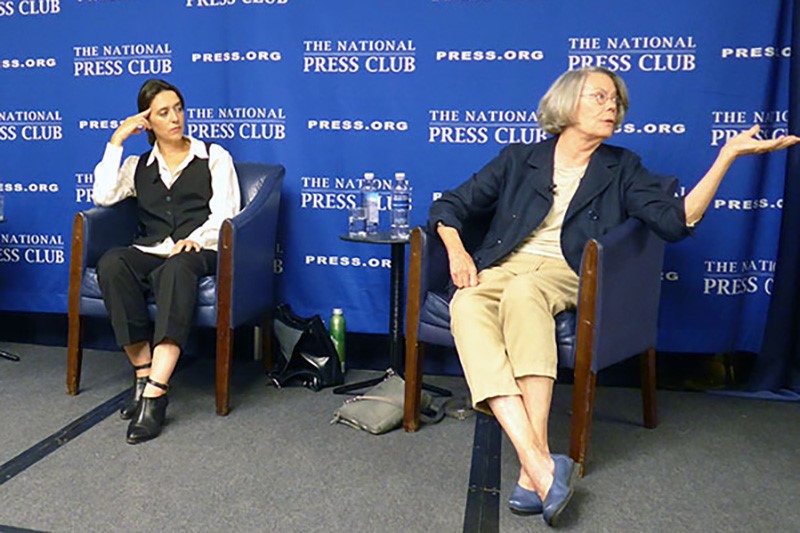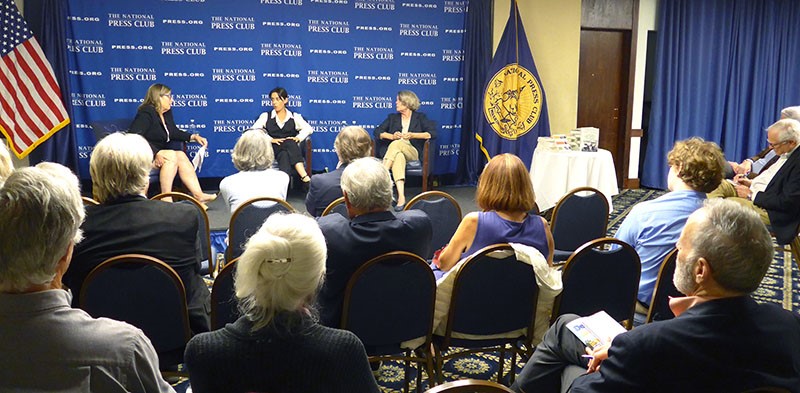Women combat reporters told story of Vietnam War from unique perspectives
The history of women combat reporters in Vietnam seems to have gotten lost, two authors told the National Press Club’s History and Heritage program Wednesday, Oct. 11. That’s why they are doing all they can to revive it.
“We’re always declaring it’s the Year of the Woman again,” said Lorissa Rinehart, author of “First to the Front, the Untold Story of Dickey Chapelle, Trailblazing Female War Correspondent.” “That’s because our histories have been erased so many times. It’s a comfort in a lot of ways to know we are not alone; that we are part of a tradition and a lineage.”

Women reporters often were pushed to the sidelines, but that gave them the opportunity to look at the Vietnam War from different perspectives, said Elizabeth Becker, author of “You Don’t belong Here: How Three Women Rewrote the Story of War.” Becker herself had been a war correspondent, beginning her career as a stringer for the Washington Post reporting from Cambodia.
She told the story of Frances FitzGerald, who like most women in the early 1960s was relegated to the “Pink Ghetto,” writing about food, fashion, furniture and family. When she got to Newsweek Magazine, she was told she could only be a researcher, never a writer. That’s when she bought a ticket to Vietnam to cover the war as a freelance writer.
Barred from many of the stories the male reporters were doing, Becker said, FitzGerald sought those overlooked stories that described the impact of the war on civilians, spending weeks in the villages to discover the difficulties civilians had with their lives being run by the Saigon government during the day and by the rebels during the night.
“She gave human form to the Vietnamese violence stories,” Becker said. “Everybody does that now, but nobody did that then.” Her stories appeared in the Atlantic Magazine, the New York Times Magazine, and Vogue Magazine.
And when she got home, she battled publishers with her book “Fire in the Lake” that was the only book published during the War looking at both the American and Vietnamese perspectives, Becker said. It went on to win the Pulitzer Prize, the National Book Award and the and the Bancroft Prize.

Dickey Chappelle managed to become a photojournalist and war correspondent during World War II, working for National Geographic, Rinehart said. She survived the battles of Iwo Jima and Okinawa. During the Cold War, she reported from around the world, including in Cuba and Algeria. She even trained as a paratrooper. She spent six weeks in a communist jail during the Hungarian Revolution.
By the time she got to Vietnam, she had more experience than most combat correspondents. She was allowed to go out on Marine patrols, dressed in fatigues, an Australian bush hat and pearl earrings.
After 20 years in combat, she knew her time must be about up, Rinehart said. She told a colleague that when she dies, she wants to die on patrol. The next day, setting out on a Marine search and destroy mission, an IED exploded in front of her.
She was buried with a Marine honor guard. They put up a sign that said, “she was one of our own and we will miss her,” Rinehart said. “She was very much part of that culture and part of that heritage.”
